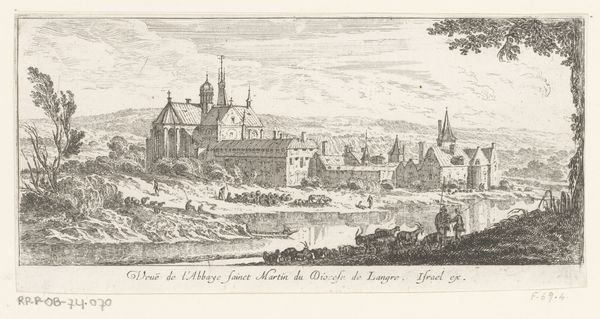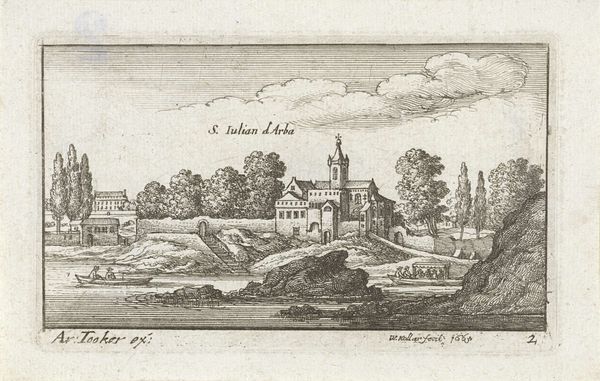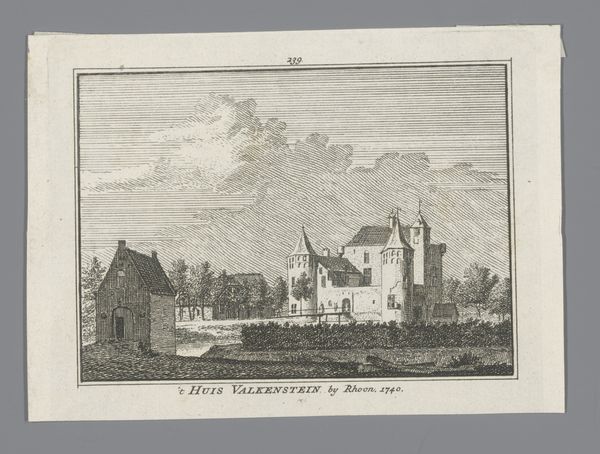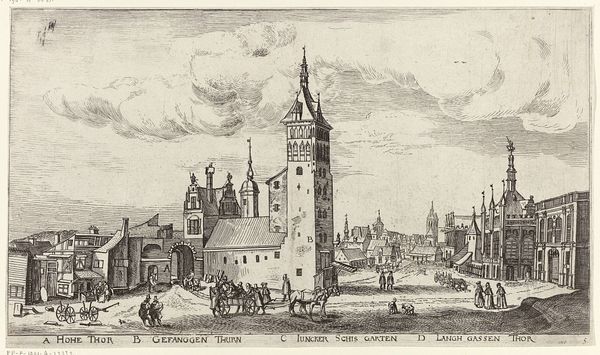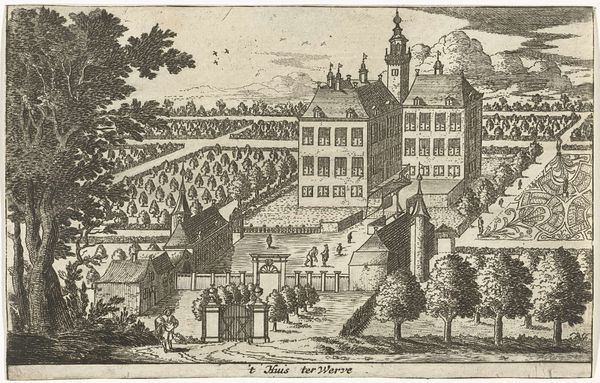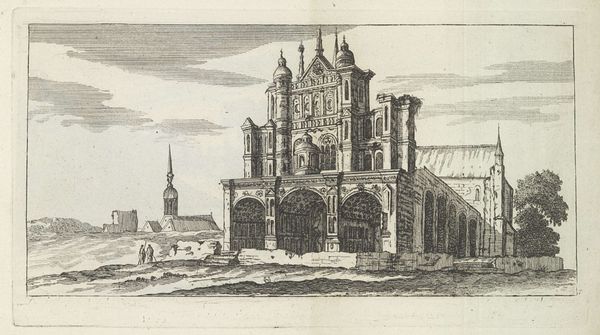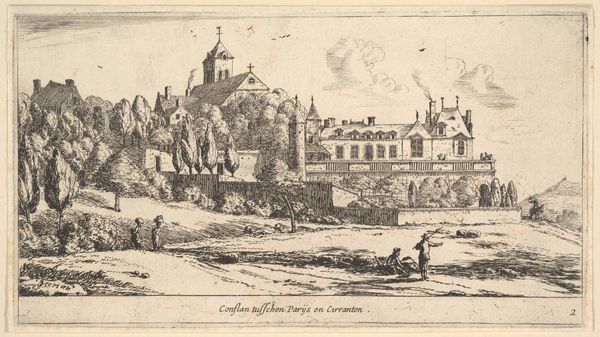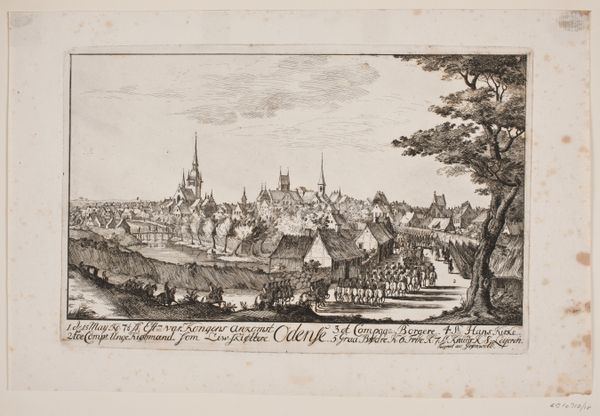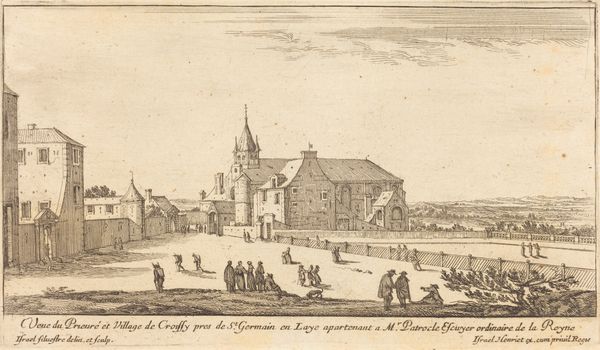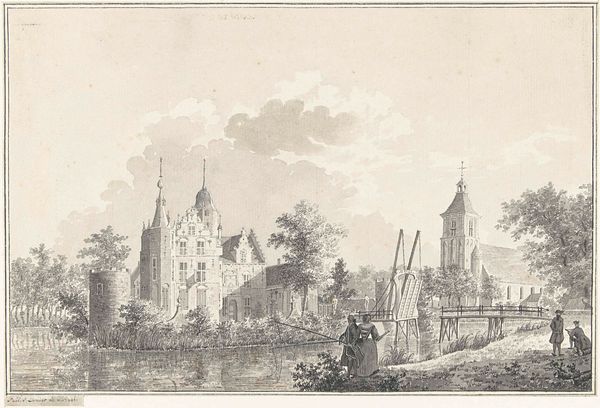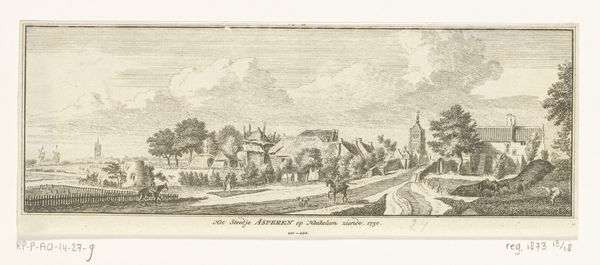
print, etching, engraving
#
baroque
#
dutch-golden-age
# print
#
etching
#
old engraving style
#
landscape
#
cityscape
#
engraving
Dimensions: height 80 mm, width 115 mm
Copyright: Rijks Museum: Open Domain
Abraham Rademaker etched this view of Cleef in the 17th or 18th century. Dominating the landscape is the Schwanenburg castle, perched high on a hill overlooking the town. Castles are not just structures of defense but are potent symbols of power and authority. Consider the motif of the "high place." From ancient ziggurats to the Acropolis, elevated structures have historically signified a connection to the divine or supreme earthly power. Here, the castle on the hill not only physically overlooks the town but also symbolizes the hierarchical structure of society. The castle's elevated position allows it to survey and control the surrounding environment. The castle looms over the town in a psychological relationship of dominance and subservience. This echoes the power dynamics of feudal society, where the lord's castle served as a constant reminder of his authority. This visual language taps into our collective memory, reminding us of the often tense relationship between those who govern and those who are governed. The image of the castle on a hill has recurred throughout history, reflecting the cyclical nature of power and the enduring human desire for security and control.
Comments
No comments
Be the first to comment and join the conversation on the ultimate creative platform.
